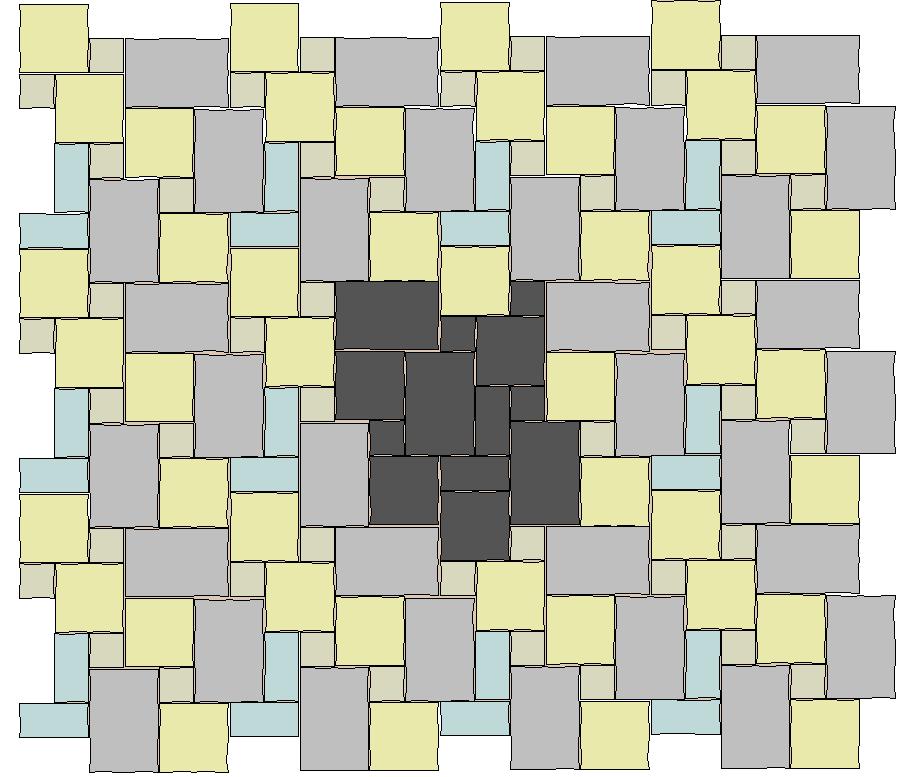Introduction:
There are some paving arrangements that attempt to mimic genuine random layouts but are actually repeating motifs, and therefore, if we’re being all technical and pedantic, a pattern. Typically, they take a relatively small number of different sizes of paver, usually three or four, and arrange them into a ‘cluster’ that is then repeated over and over again to cover an area.
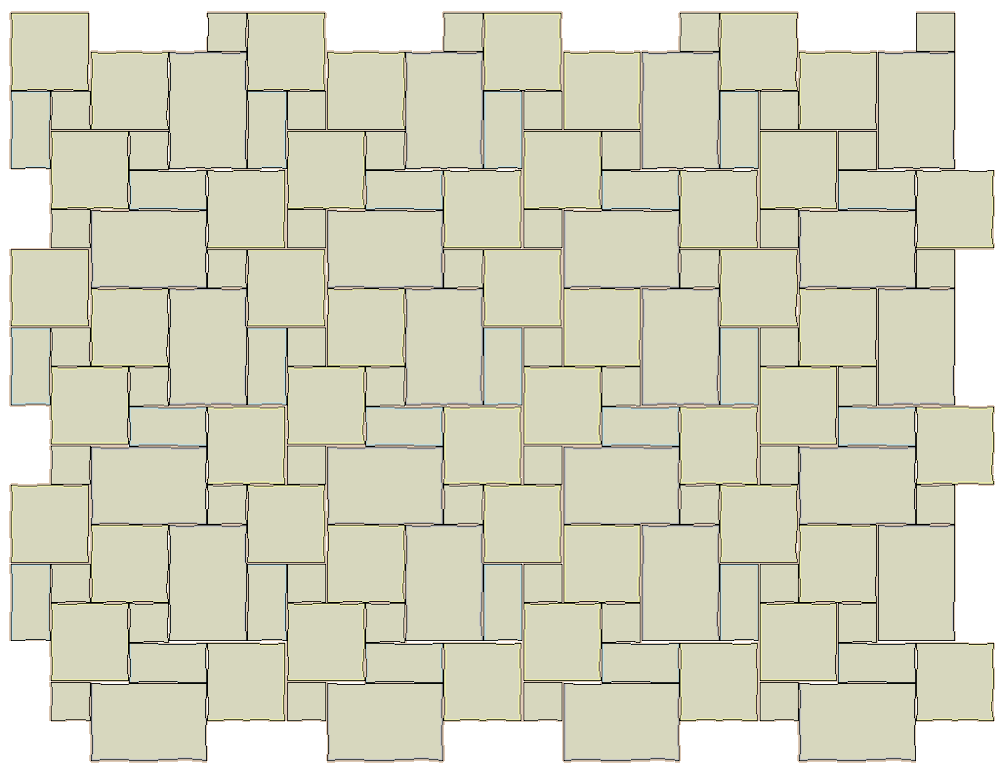
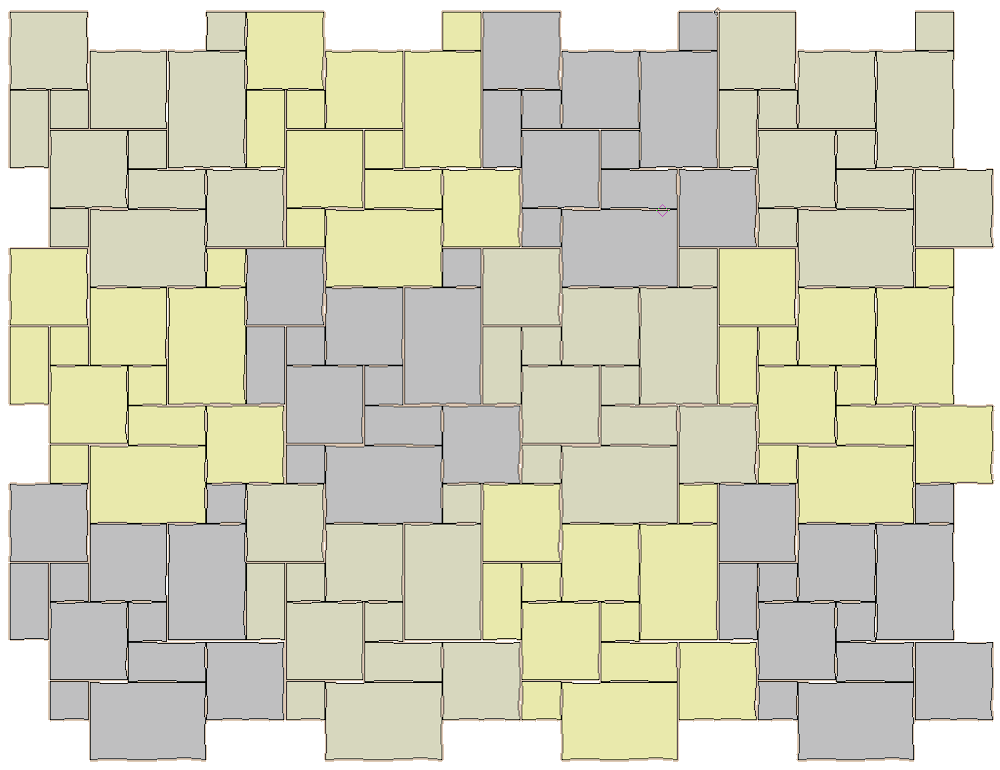
They are sometimes given seemingly official names, such as Opus or American, but these, like the names for colours of paint, are just a notion by someone with nothing better to do.
There’s nothing inherently wrong with pseudo-random or cluster layouts. They represent a perfectly valid and acceptable way to lay paving but there are a couple of drawbacks for those who prefer what we might refer to as ‘authenticity’.
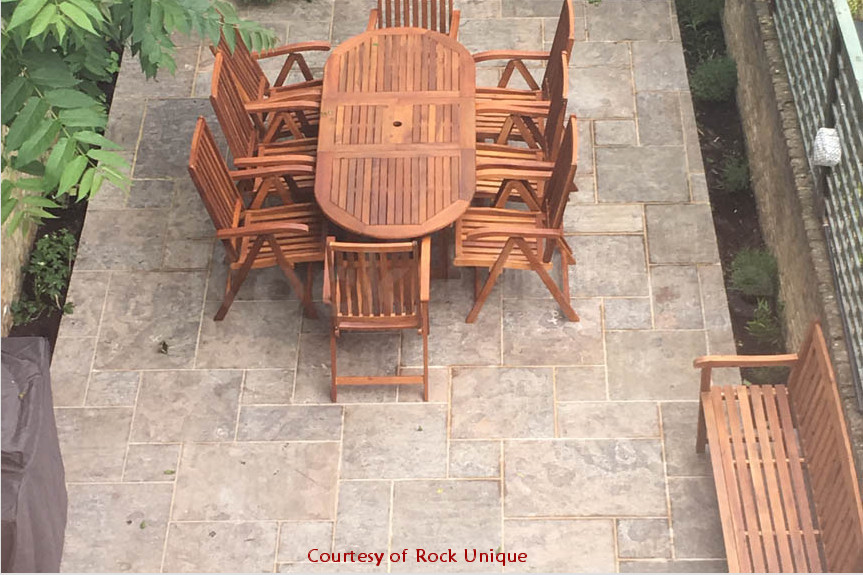
Not all plain sailing: Problems
Pseudo-random layouts, being a repeating motif, make no allowance for cutting-in at edges and boundaries. Unless the pattern is adapted, there’s a significant risk that small pieces, darts, slivers and the like, could end up being used at vulnerable edges. Remember, the rules of cutting-in preclude the use of any pieces that are less than a quarter of a full paver, whether it’s a block, a sett, or a flagstone.
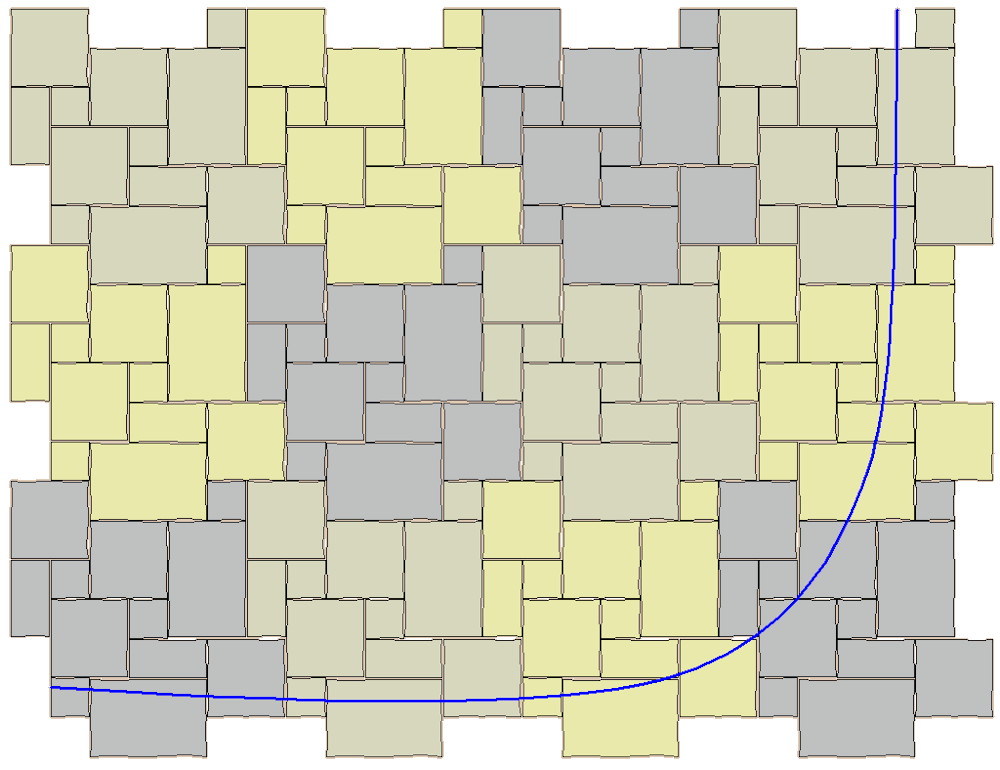
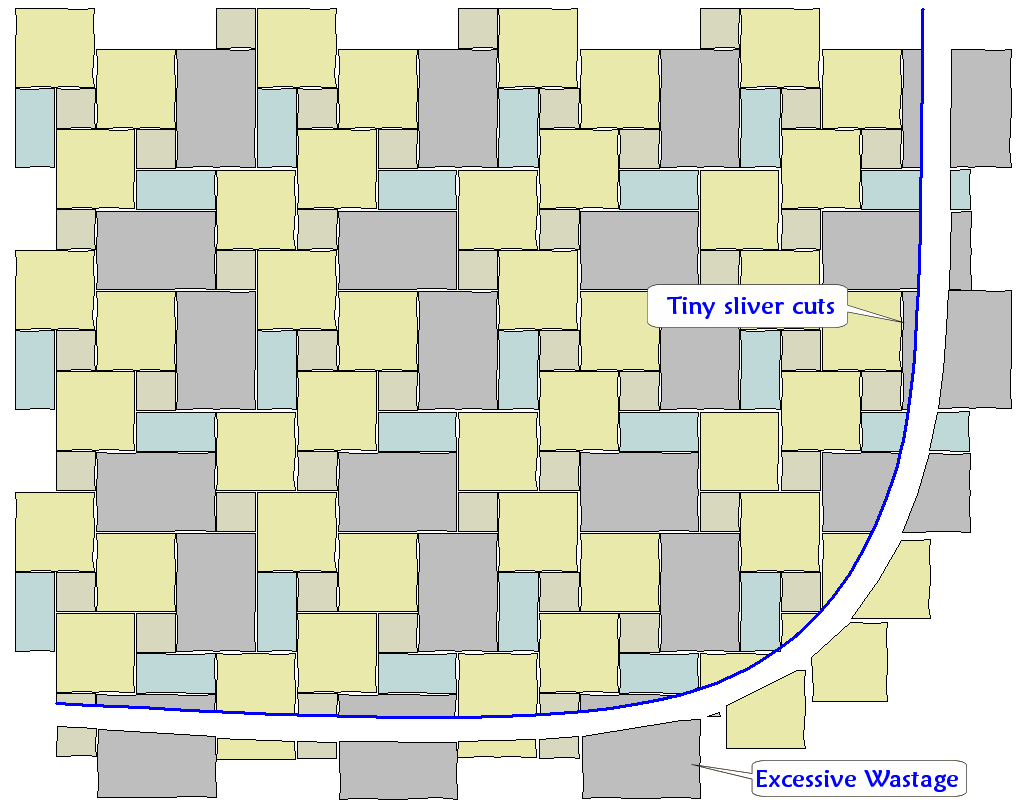
Then there’s the concomitant problem of wastage. Unless that layout is adapted and varied, there’s a strong likelihood that any cutting-in procedure that maintains the pattern will result in ridiculous wastage, with small pieces being cut from large pavers.
Obviously, the pattern could be adapted (as shown below) to ensure wastage is minimised and the layout amended to ensure no unsuitably small pieces are used, but there’s a shockingly high percentage of installers (and clients!) that seem to believe the pattern is sacrosanct and cannot or should not be altered in any way.
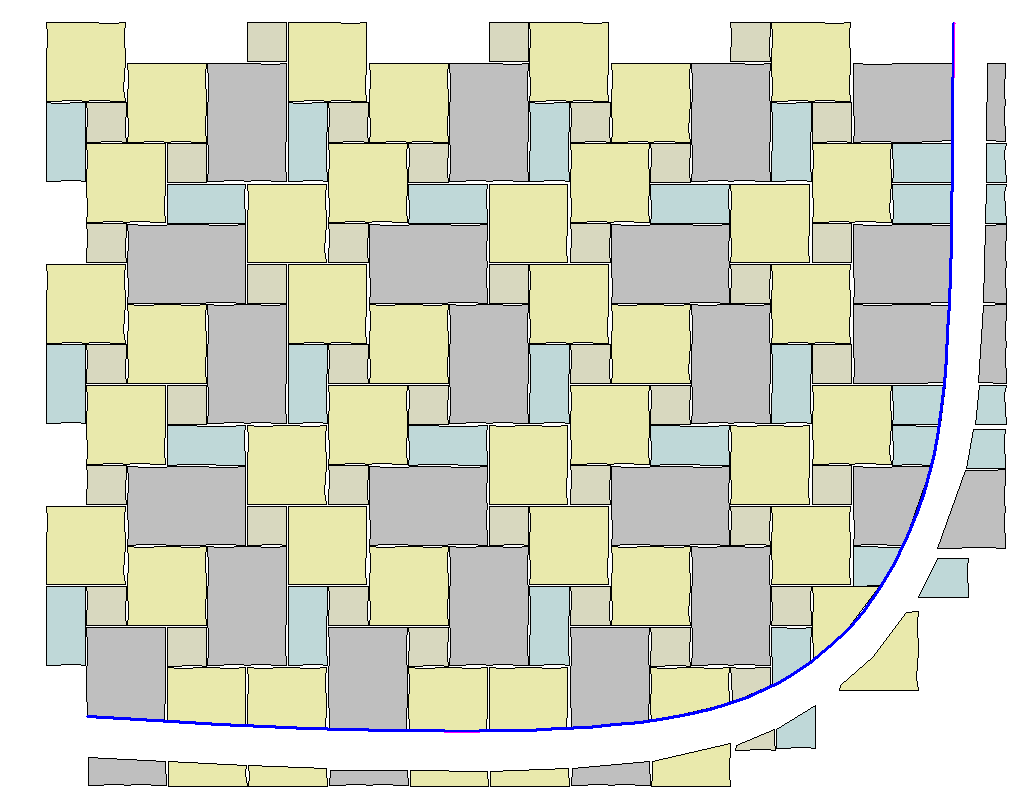
Appearance and aesthetics:
The second major drawback is the appearance. Not all pseudo-random layouts are created equal. The smaller the motif, the fewer components it contains, the greater is the risk of it becoming blindingly obvious that the layout is anything but random. If the original intention was to give the impression that the layout was a genuine random layout, then small clusters featuring, say, just four pieces in three sizes, are probably not a good choice. The human eye is conditioned to identify patterns and it won’t take more than a few seconds to detect such a simple motif.
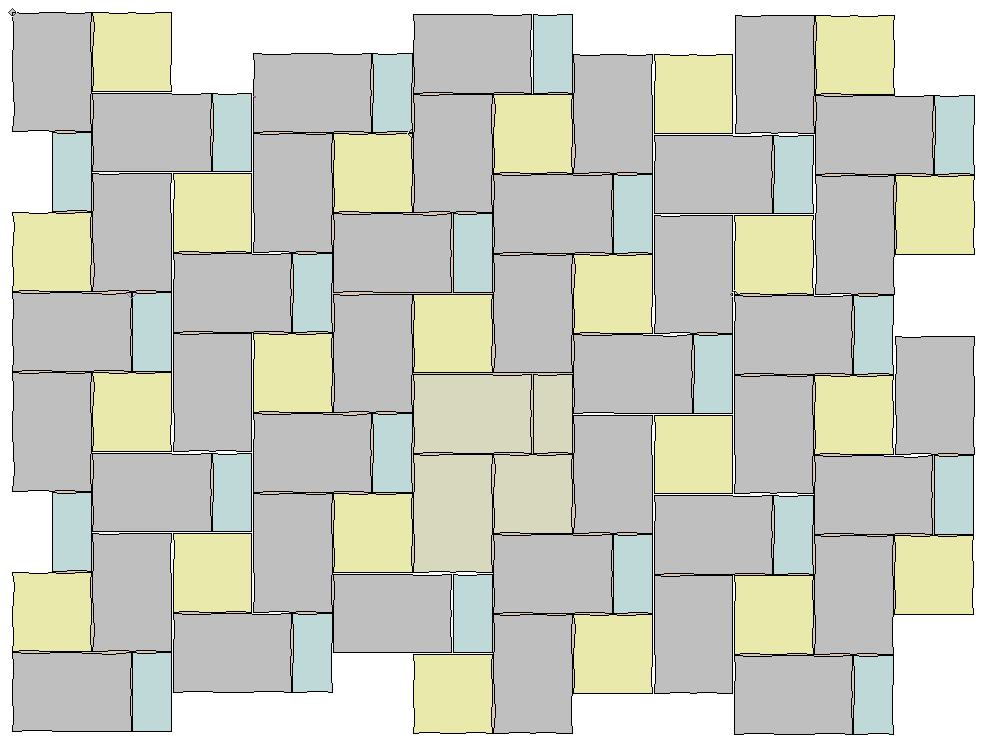
The problem becomes more apparent on larger areas, where there are a greater number of repetitions of the motif, so, when a pseudo-random layout is to be used, look to use a motif that’s as large and contains as many pieces as possible.
Summary:
One of the better features of genuine random layouts is that the complete absence of any discernible pattern causes the eye to scan around, desperately searching for something to recognise, and this has the effect of making smaller areas seem, somehow, bigger. It’s all cod psychology, of course, but it’s surprising just how effective it can be. Pseudo-random layouts aren’t able to do this. The eye picks up the pattern, the brain immediately applies a sense of scale to the whole paved area, and the objective is defeated.
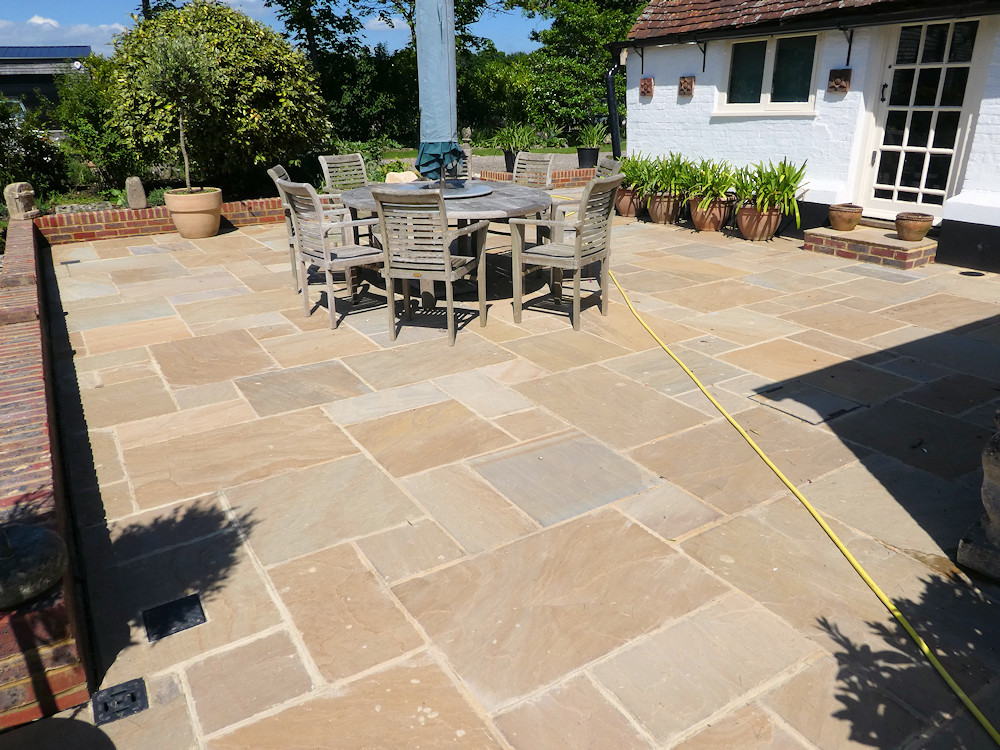
Pseudo-random layouts are fine, as long as their limitations are appreciated. They can be useful on some projects, but don’t allow the pattern to rule – adapt and change it as necessary to accommodate edges, boundaries, obstructions and intrusions so that best use is made of the paving materials, and the quantity of cutting and wastage is minimised.
Patterns for pseudo-random layouts and clusters:
A small selection of patterns that use clusters of common-sized flags.
These may be adapted to suit other modular sizes of flags and setts - as long as the ratio of sizes remains the same.
For example, 900x600 with 600x600 ( 600 series ) pieces could be substituted by 840x560 and 560x560 ( 560 series ) pieces or by 200x100 and 100x100mm setts.
And, of course, patterns can be rotated, most commonly by 90°, to give a subtly different appearance.
The patterns shown may well have appeared elsewhere with fancy made-up titles, usually including the term "Opus", but rarely is the same pattern given the same name by two separate suppliers, so, in that time-honoured tradition, I will give them equally meaningless made-up names...
Lancashire Opus:
A four-size laying pattern using:
- 3 @ 900x600mm - 3 @ 3:2 ratio
- 2 @ 600x600mm - 2 @ 2:2 ratio
- 4 @ 600x300mm - 4 @ 2:1 ratio
- 2 @ 300x300mm - 2 @ 1:1 ratio
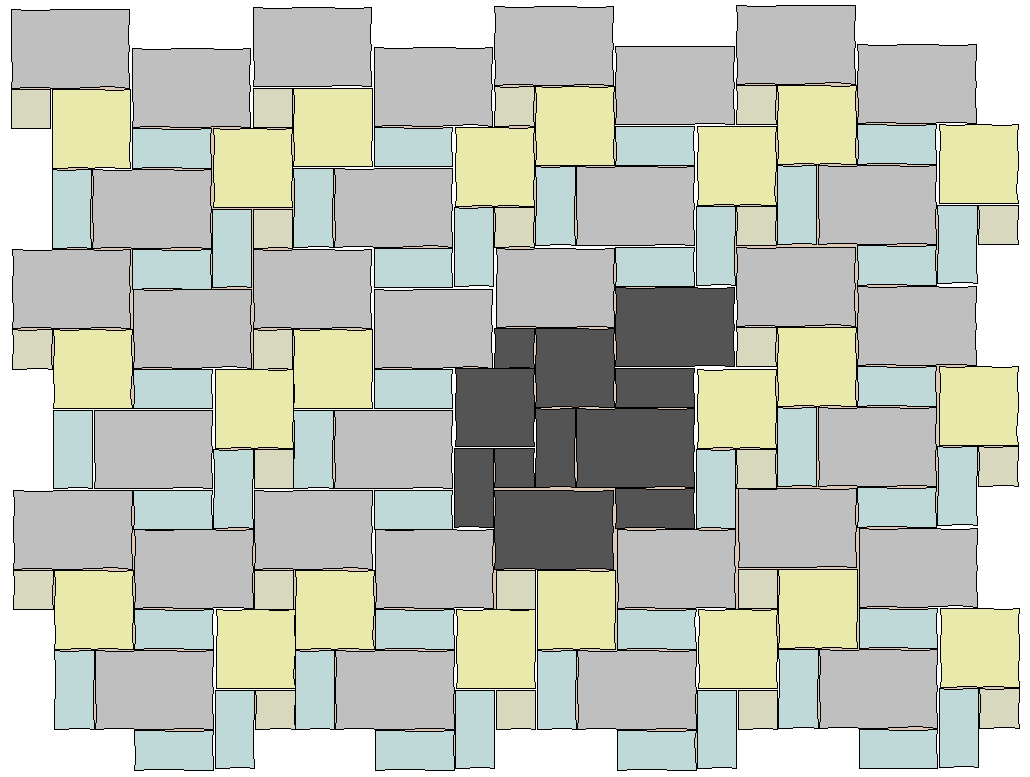
Pussy Opus:
A four-size laying pattern using:
- 2 @ 900x600mm - 2 @ 3:2 ratio
- 4 @ 600x600mm - 4 @ 2:2 ratio
- 2 @ 600x300mm - 2 @ 2:1 ratio
- 4 @ 300x300mm - 4 @ 1:1 ratio
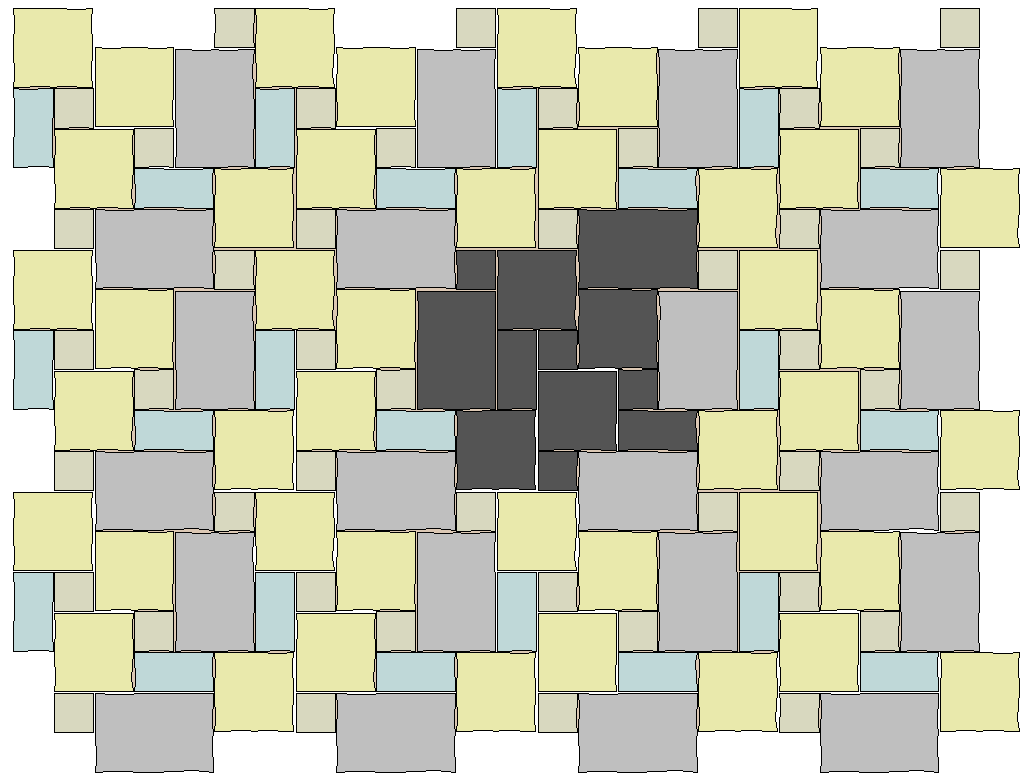
Octopus Opus:
A four-size laying pattern using:
- 2 @ 900x600mm - 2 @ 3:2 ratio
- 4 @ 600x600mm - 4 @ 2:2 ratio
- 2 @ 600x300mm - 2 @ 2:1 ratio
- 3 @ 300x300mm - 3 @ 1:1 ratio
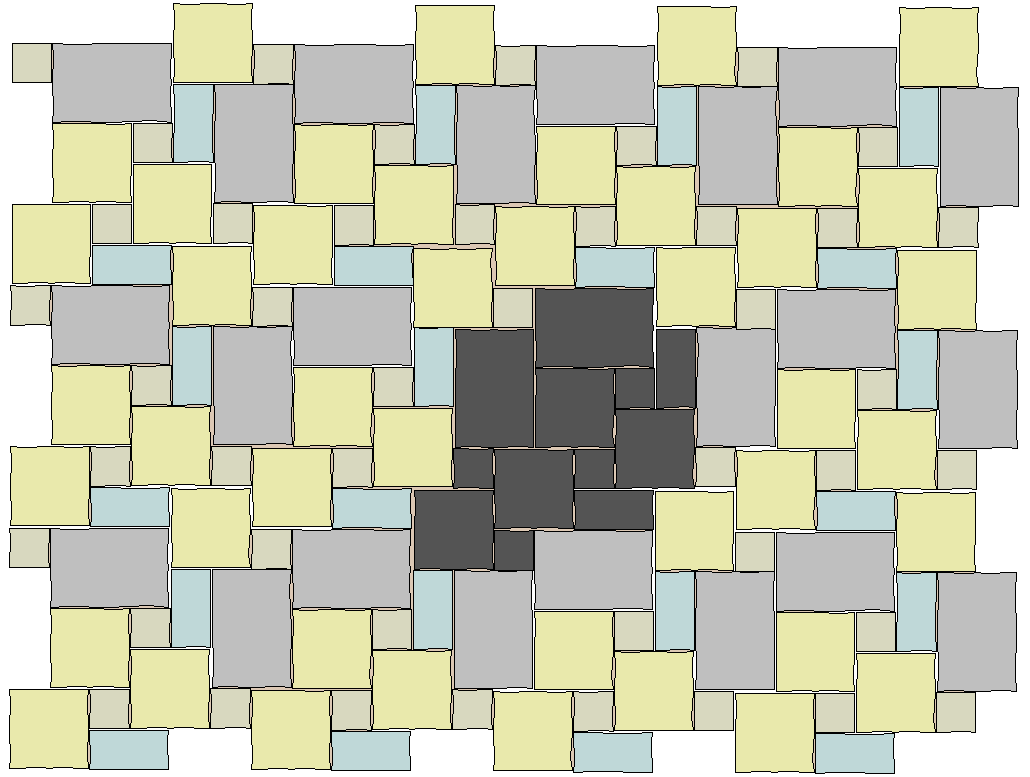
Opulent Opus:
A four-size laying pattern using:
- 3 @ 900x600mm - 3 @ 3:2 ratio
- 4 @ 600x600mm - 4 @ 2:2 ratio
- 2 @ 600x300mm - 2 @ 2:1 ratio
- 4 @ 300x300mm - 4 @ 1:1 ratio
